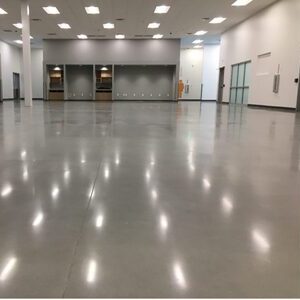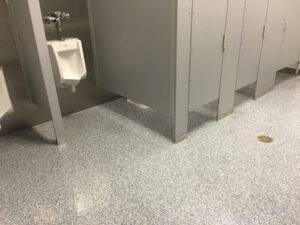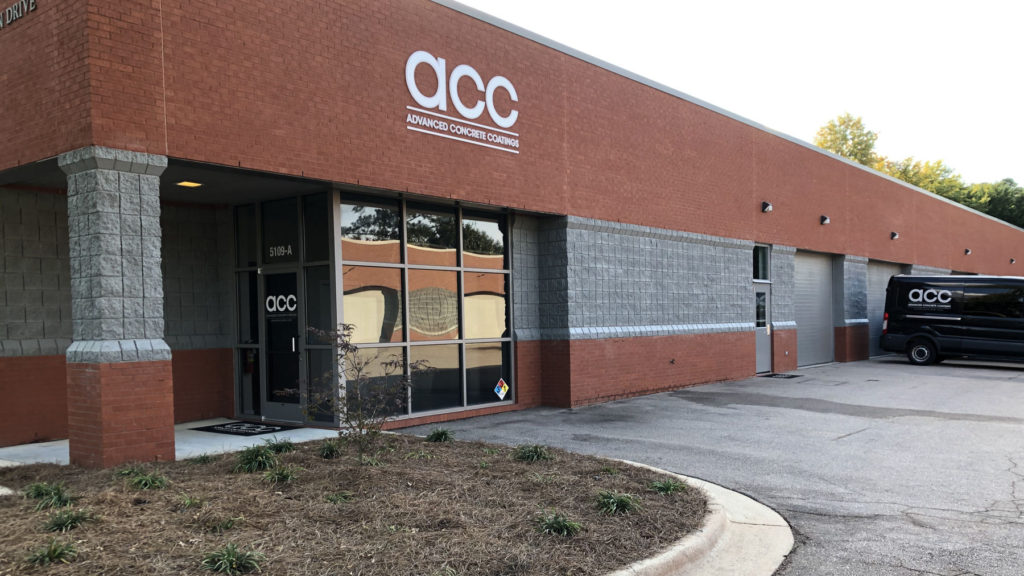Polished Concrete Floors vs Epoxy
by Tom Cramsie
Both polished concrete floors and epoxy sealed floors have become popular flooring options in recent years in a variety of settings. While a polished concrete floor may have a similar appearance to a floor sealed with clear epoxy, there are a number of differences between the two.
Polished Concrete
Polished concrete has quickly become one of the most popular flooring options in recent years due to its low cost, durability, low-maintenance and natural beauty. Polished concrete can be installed anywhere there is existing concrete and offers an array of colors and design options. Polished concrete floors can be found in a multitude of settings and are commonly seen in schools, offices and retail settings.
Polishing concrete is a multi-step diamond grinding process where the grit of the diamond segments transition from course to very fine. Course diamond segments are used for the initial grinds to open the concrete and gradually transition to very fine resin bond diamond segments. In doing so, the concrete pore space becomes closed, producing a natural shine. A polished concrete guard product is often applied as the final step to seal any micropores and aid with stain prevention.

Epoxy Sealers
Epoxy is a type of sealer that is applied to the concrete surface to help prevent staining and wear. Two-part epoxies are comprised of a resin and hardener that when mixed together initiate a chemical reaction. Once cured, the liquids form a hard sheet across the surface (think of it as liquid plastic). Epoxies are typically categorized as a “build” sealer, because it can be applied at a greater thickness than most other sealers. Applying a clear epoxy sealer to concrete will provide a “wet look” which may resemble polished concrete to the untrained eye.
There are a number of epoxies but, for the most part, they fall into either a water-based or solvent-based category. Epoxies typically come in a variety of colors including clear. Different broadcast mediums, such as acrylic flake or quartz, can be broadcast into the epoxy to add a decorative element as well as traction control. They can mask blemishes in the concrete. Epoxies are often used in commercial kitchens and restrooms, garages and industrial settings.

Conclusion
In all, there are more differences than similarities between polished concrete and epoxy. Polished concrete is a process of refining the concrete surface using diamond grinding equipment fitted with various grit diamond segments. The goal is to refine the concrete surface to the point the pores are closed as much as possible. This creates reflectivity (shine) while also creating a surface that is scuff and scratch resistant with some ability to resist stains.
Epoxy is a type of coating that can be applied to the concrete surface to help aid in stain prevention and wear. While relatively hard, epoxies are still subject to scuffing and scratching given they are sitting on the surface. Epoxies may require sanding and re-coating in order to keep a fresh appearance. Additionally, epoxies have been found to gradually “amber” over time and are slowly being replaced by urethane equivalents.
